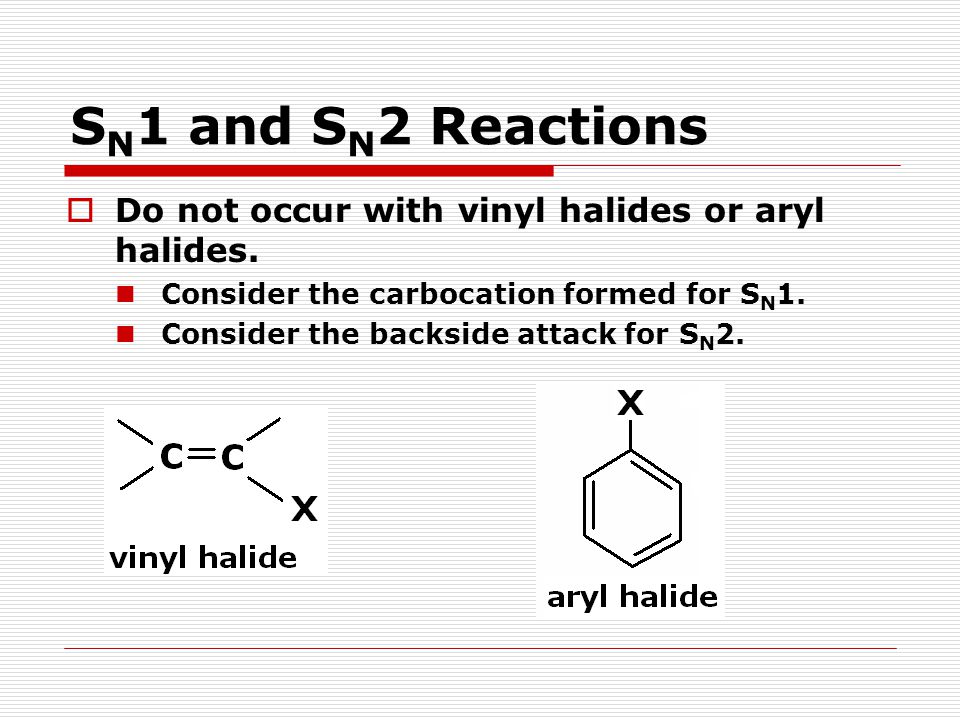From the perspective of applications the dominant member of this class of compounds is vinyl chloride which is produced on the scale of millions of.
Vinylic halides sn2.
The picture below helps explain why this reaction is so much more difficult energetically more costly than the more common solvolysis of an alkyl halide.
In line formulas such as the following a carbon atom is assumed to be at every intersection of two lines and at the end.
Nucleophilic substitution reactions sn1 and sn2 mechanism.
Are most suitable for sn2 reactions.
Vinylic chlorides and bromides constitute a diverse class of marine natural products.
S n 2 reactions of allylic halides and tosylates.
They exhibit faster s n 2 reactivity than secondary alkyl halides because the bimolecular transition state is stabilized by hyperconjugation between the orbital of the nucleophile and the conjugated pi bond of the allylic.
For this reason alkenyl halides with the formula rch chx are sometimes called vinyl halides.
The resultant vinylic carbocations are actually stable enough to be observed using nmr spectroscopy.
In organic chemistry a vinyl halide is a compound with the formula ch 2 chx x halide the term vinyl is often used to describe any alkenyl group.
Chemistry concept 2 058 views.
Methyl halides such as ch3br ch3cl ch3i etc.
Certain vinylic halides can be forced to react by the s n1 e1 mech anism under extreme conditions but such reactions are relatively uncommon.
Vinylic and aryl halides however are virtually inert to the conditions that promote s n1 or e1 reactions of alkyl halides.
For example the following compounds have all been isolated from the volatile oil of chondrococcus hornemanni a red seaweed found in the pacific ocean.
Allylic halides and tosylates are excellent electrophiles for bimolecular nucleophilic substitution reactions s n 2.
A s math n math 2 mechanism is not favoured for 3 reasons.
Today i got a good question i want to make a point of posting the best question from the day s teaching and my answer.
The density functional theory calculations suggest that the cyclization proceeds through sn2 type substitution the in plane vinylic nucleophilic substitution snvσ when vinyl halides are.
The substituents around a double bond are within the same plane therefore an s math n math 2 would give steric hindrance.
Vinylic halides natural occurrence.
Solvolysis of vinyl halides in very acidic media is an example.
Haloalkanes haroarenes part 1.
Yes an alkyl halide can undergo both sn1 and sn2 reactions it just depends on what kind of alkyl halide it is.
A sn1 sn2 mechanism on vinyl halide would look like this.

